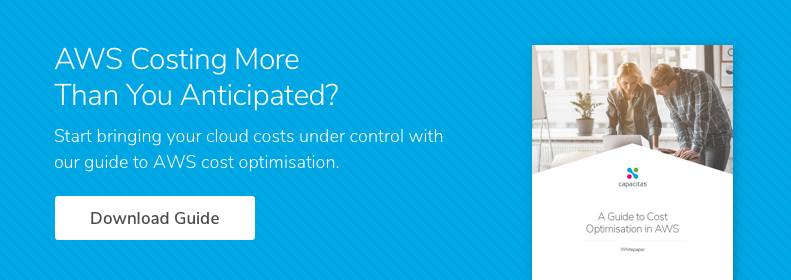Until recently, major investments in hardware and software were signed off by the board as one-off CAPEX purchases. But the rise in public cloud use means there’s been a significant shift in the way services are paid for – and approved – by the business.
While “pay as you go” tariffs can make cloud look cost-effective on the surface, the reality is that cloud costs are far more likely to escalate out of control – with the board only finding out about them when they do.
As more of the firm’s critical IT estate moves into the cloud, it’s now the second or third-biggest line item for some companies. And that’s starting to cause concern: even Facebook founder Mark Zuckerberg recently questioned the cost of cloud computing, suggesting it’s too expensive and stifles scientific progress.
So, what’s causing the problem?
Simply, it’s an issue of unmanaged cost. According to Rightscale, up to 35% of cloud capacity is wasted because simple housekeeping tasks such as rightsizing and turning off idle instances aren’t regularly performed.
It’s particularly common in DevOps-style environments where greater autonomy means cloud usage and cost are more likely to spiral out of control. And with the rapid growth of the internet of things (IoT) and increased connectivity, IDC reports that cloud spend is only set to increase – making the problem even worse.
If you’re paying for cloud services by the minute or megabyte, unnecessary workloads could be adding to your overall expenditure without delivering any corresponding business value.
Three questions to ask IT
To help accurately forecast, plan and budget for cloud expenditure – and keep it off the board’s agenda – you need to look beyond simple housekeeping tasks. Here are three questions you should be asking your IT department:
1. Are we processing unnecessary data?
More to the point, you need to ask why you’re processing the data you are, and what it’s being used for.
This is vital because you could be at risk of processing data that isn’t delivering any useful insights or information you don’t already know.
On a set monthly or annual plan, this wouldn’t be an issue from a billing point of view, but when you’re paying by the hour, by data volume, or by user, the costs can soon mount up.
2. Does service performance need to be so stringent?
As workloads such as AI and real-time analytics become increasingly business-critical, there’s a risk in thinking that data needs to be crunched 24/7/365 – and delivered to strict timescales – to produce unique and competitive insights.
But it’s wise to consider whether this level of performance and availability is really delivering a positive return on investment (ROI). Are there areas where less-expensive options would still deliver the same value? If so, those areas are prime candidates for cost reduction.
3. Are our apps appropriately architected for the cloud?
Cloud services are evolving all the time, offering unprecedented capabilities in areas like real-time analytics, predictive modelling and seamless scaling.
But often, legacy workloads are simply ‘lifted and shifted’ to the cloud, without re-architecting them to take advantage of the cloud’s unique technological capabilities. Even when workloads are built to run in the cloud, they often aren’t designed to make efficient use of the underlying platform and services.
That can result in the business paying for cloud services that aren’t being used to their full potential – if they’re being used at all. An audit of expected versus actual performance can highlight areas where re-architecting an app could result in much more business value; delivering a much greater return on investment from the cloud.
Cloud excellence: a new imperative for digital-first organisations
It’s all too easy for cloud costs to exceed forecasts and start biting into the bottom line. It’s why more and more digital-first companies are implementing “cloud excellence” programmes to help identify and maintain the optimum balance of speed, scale and cost.
It’s something we helped family history discovery website Ancestry to tackle – in the process reducing their cloud costs by more than 40%. While identifying rightsizing and efficiency opportunities, we also ensured Ancestry can always scale when it needs to.
Turn cloud from a cost to a value driver
As cloud costs continue to escalate, the need for cloud excellence will become a more frequent topic at board meetings. If you’d like to learn more about how to achieve cloud excellence in your business, visit our website or get in touch with one of our cloud optimisation experts.
